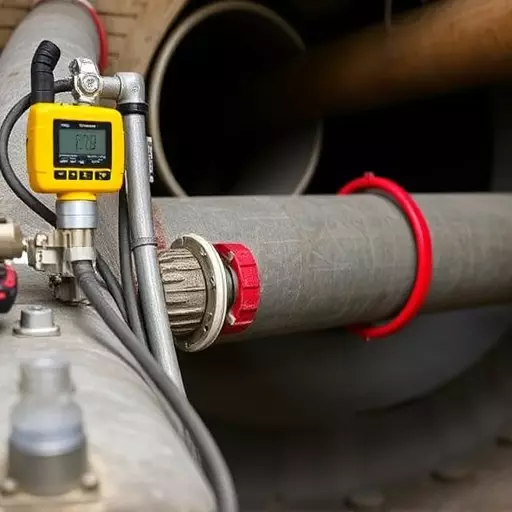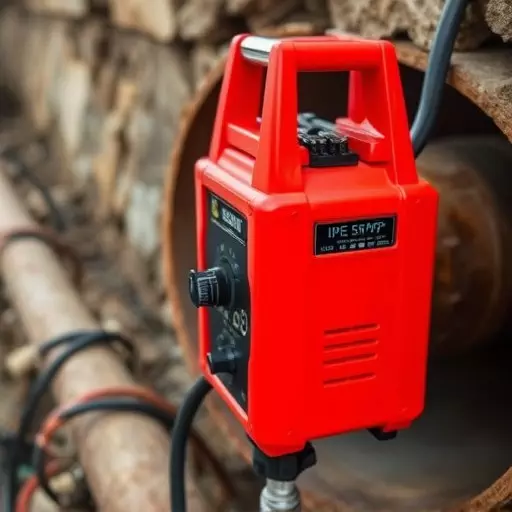Sonde training equips professionals with vital skills for efficient pipe locating in urban areas like Toledo. It involves mastering sonde technologies (EDM, RF), safety protocols, and hands-on practice to interpret readings accurately. By combining theoretical knowledge and practical exercises, this training ensures experts can navigate complex landscapes, map utilities swiftly, and adhere to industry standards, thus promoting safe excavation practices in bustling urban environments using advanced sonde and locating techniques.
“Dive into the world of sonde training and certification, essential skills for navigating the intricate landscape of pipe locating. This comprehensive guide covers everything from understanding sonde training’s foundational elements to advanced techniques enhancing precision.
Explore sonde equipment for pipe locating, mastering techniques for Locating Toledo and real-world applications in infrastructure maintenance. Learn about industry standards through an in-depth look at the certification process, ensuring you’re equipped to excel in this vital field.”
- Understanding Sonde Training: An Overview of Essential Skills
- Sonde Equipment for Pipe Locating: A Comprehensive Guide
- Locating Toledo: Techniques and Best Practices
- Advanced Sonde and Locating Techniques: Enhancing Precision
- Certification Process: Preparing for Industry Standards
- Real-World Applications: Sonde's Role in Infrastructure Maintenance
Understanding Sonde Training: An Overview of Essential Skills

Understanding Sonde Training involves grasping a set of specialized skills essential for effectively using sonde equipment in pipe locating. A sonde is a critical tool used to navigate and map underground utilities, including pipes, cables, and other structures. Proficiency in operating sondes requires a blend of technical knowledge, safety awareness, and hands-on experience.
In the context of locating Toledo (or any urban area), sonde and locating techniques are indispensable. Trainees must learn how to interpret sonde readings accurately, navigate complex underground landscapes, and adapt their methods based on varying soil conditions. This training ensures professionals can efficiently identify and map utilities, promoting safe excavation practices and minimizing disruptions in bustling urban environments.
Sonde Equipment for Pipe Locating: A Comprehensive Guide

Sonde equipment plays a vital role in the precise art of pipe locating, enabling professionals to navigate through complex landscapes with accuracy and efficiency. In the world of sonde and locating techniques, understanding the diverse range of sonde equipment for pipe locating is crucial. From electronic distance measurement (EDM) sondes to radio frequency (RF) units, each tool offers unique advantages tailored to specific localization challenges.
The process involves using advanced sonde technology to pinpoint pipes beneath the surface. These devices emit signals that are received by sensors on the surface or nearby pipes, translating data into actionable insights for accurate pipe maps. In today’s digital era, this innovative approach has revolutionized the way we locate and maintain underground infrastructure, ensuring safe and efficient navigation around critical utilities.
Locating Toledo: Techniques and Best Practices

Locating Toledo involves precise and efficient use of sonde equipment for pipe locating. The process requires a combination of advanced tools and proven techniques to accurately identify and map underground pipes, cables, and other utilities. Professional sonde operators leverage specialized devices like ground penetration radar (GPR), electromagnetic locators, and mechanical excavators to navigate the underground landscape.
Best practices in Locating Toledo include thorough planning, adherence to industry standards, and continuous training on sonde and locating techniques. Regular calibration of equipment, maintaining clear communication among team members, and considering site-specific conditions are key to ensuring successful and safe pipe location. This meticulous approach not only enhances accuracy but also minimizes the risk of damage to underground infrastructure during excavation projects.
Advanced Sonde and Locating Techniques: Enhancing Precision

Certification Process: Preparing for Industry Standards

The certification process for sonde training is designed to prepare professionals for the industry standards in locating pipes using sonde equipment. This involves a rigorous understanding of various sonde and locating techniques, ensuring that technicians can accurately identify and map underground utilities. The first step includes studying the theoretical aspects, such as different types of sondes, their applications, and the latest technologies used in pipe location. Practicing with actual sonde equipment for pipe locating is also crucial, allowing individuals to gain hands-on experience in diverse scenarios.
Industry standards demand a deep knowledge of local regulations and safety protocols. Candidates must demonstrate proficiency in using advanced tools and software for precise locating, ensuring minimal disruption during excavation projects. By combining theoretical learning and practical exercises, certification programs aim to develop skilled professionals capable of navigating complex underground landscapes using sonde technology, thereby promoting safer and more efficient infrastructure development.
Real-World Applications: Sonde's Role in Infrastructure Maintenance



